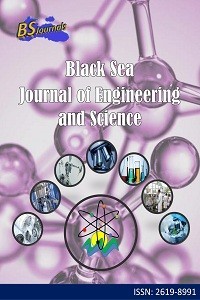A Study on Recyclability of AlSi7Mg0.3 Machining Waste
Aluminium products are widely used in the automotive industry. One of the important aluminium products in the automotive is wheel production. Turkish wheel production is expected to reach 360000 tons in 2025. The wheels are produced by Low-Pressure Die Casting at the first stage and the machining process in CNC machines is used to create the final form. A significant amount of machining waste (swarf, turnings, and chips) is created during the machining and the importance of secondary aluminium has been increasing due to environmental and economic concerns. This study focuses on the recycling of AlSi7Mg0.3 cast alloy machining waste. The turnings were sorted into two size fractions and remelted separately under a salt flux in a resistance heating furnace. Two different salt mixtures with different melting points and different salt factors were studied in this work. Metal yield and coagulation yield after remelting were discussed.
Anahtar Kelimeler:
Recycling, Aluminium, Machining waste, Remelting
A Study on Recyclability of AlSi7Mg0.3 Machining Waste
Aluminium products are widely used in the automotive industry. One of the important aluminium products in the automotive is wheel production. Turkish wheel production is expected to reach 360000 tons in 2025. The wheels are produced by Low-Pressure Die Casting at the first stage and the machining process in CNC machines is used to create the final form. A significant amount of machining waste (swarf, turnings, and chips) is created during the machining and the importance of secondary aluminium has been increasing due to environmental and economic concerns. This study focuses on the recycling of AlSi7Mg0.3 cast alloy machining waste. The turnings were sorted into two size fractions and remelted separately under a salt flux in a resistance heating furnace. Two different salt mixtures with different melting points and different salt factors were studied in this work. Metal yield and coagulation yield after remelting were discussed.
Keywords:
Recycling, Aluminium, Machining waste, Remelting,
___
- Bolivar R, Friedrich B. 2009. The influence of increased NaCI:KCI ratios on metal yield in salt bath smelting processes for aluminium recycling. World Metallurgy ERZMETALL, 62(6): 366-371.
- Bukhalova GA, Bergman AG. 1995. Reciprocal 4-component system of fluorides and chlorides of Na, K, Ca and Ba as a flux base for remelting of secondary light metals. Russ J Appl Chem, 28(12): 1266-1274.
- Capuzzi S, Timelli G. 2018. Preparation and melting of scrap in aluminum recycling: A review. Metals, 8(4): 249. DOI: 10.3390/met8040249.
- Coleman DS, Lacy PDA. 1967. The phase equilibrium diagram for the KCl-NaCl system. Mater Res Bull, 2(10): 935-938. DOI: 10.1016/0025-5408(67)90149-3.
- Das SK, Yin W. 2007. The worldwide aluminum economy: The current state of the industry. JOM, 59: 57-63.
- Gökelma M, Meling I, Soylu E, Kvithyld A, Tranell G. 2019. A method for assessment of recyclability of aluminum from incinerated household waste. Light Metals, 2019: 1359-1365.
- Kara A, Çubuklusu HE, Topçuoğlu ÖY, Çe ÖB, Aybarç U, Kalender C. 2017. Alüminyum alaşımlı jantların tasarım ve ağırlık optimizasyonu. Pamukkale Üniv Müh Bil Derg, 23(8): 957-962.
- Kelly S, Apelian D. 2018. Automotive aluminum recycling at end of life: a grave-to-gate analysis. Center for Resource Recovery and Recycling (CR3) Metal Processing Institute Worcester Polytechnic Institute, Worcester , UK, pp: 100.
- Milke E., Friedrich B, Sydykov A, Arnold A. 2005. Solubility of CaF2 in NaCl-KCl salt flux for Al-recycling and its effect on Al-loss. Proc - Eur Metall Conf EMC, September 18–21, 2005, Dusseldorf, Germany, pp: 1537-1548.
- Ozer G, Acar S, Kısasoz A, Guler KA. 2021. Effect of waste titanium chips addition into the aluminum alloys on their microstructure. Gazi Univ J Sci, 34(4): 1096-1105. DOI: 10.35378/gujs.819612.
- Tenorio JAS, Espinosa DCR. 2002. Effect of salt/oxide interaction on the process of aluminum recycling. J Light Metals, 2(2): 89-93.
- The European Aluminium Association. 2021. The aluminium effect, a unique metal with unique properties’. URL: https://european-aluminium.eu/about-aluminium/the-aluminium-effect/. (accessed date: January 5, 2023).
- Yang Y, Xiao Y, Zhou B, Reuter MA. 2005. Aluminium recycling: Scrap melting and process simulation. John Floyd International Symposium: Sustainable Developments in Metals Processing, July 3-6, 2005, Melbourne, Australia, pp: 150-160.
- Yayın Aralığı: 6
- Başlangıç: 2018
- Yayıncı: Uğur ŞEN
